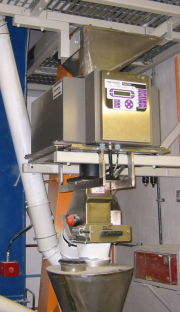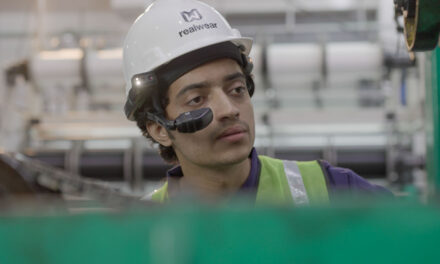Challenging production processes, keeping an open mind to future time and cost saving opportunities and working collaboratively with food sector stakeholders will underpin the success of the British government’s Industrial Strategy whitepaper unveiled at the end of last year claims the MD of Fortress Technology Europe, Phil Brown.
As Britain negotiates it way through Brexit, Phil concurs that the food industry has reached the tipping point in the productivity debate, with the UK continuing to lag well behind European and G7 peers, including The Netherlands, Germany and France. Deploying smarter technology will be integral to driving productivity growth, as well as improving food safety and quality, says the Fortress European boss.
With productivity being a measurement of output per hour by worker, machine uptime on a food production line is critical to success. However, Phil is quick to point out that on a fast moving food inspection and packing line it’s processes rather than people that often impacts performance.
He explains: “Product inspection is imperative for export and growth. For many food companies, installing a metal detector is often the most cost efficient technology. Even if inspecting for metal contaminants isn’t a retailer requirement now, SMEs that start to institute systems early in their planning will be ready to meet the demands of the more stringent retailer Codes of Practice when a product range takes off. Equally, it’s also an area where you cannot afford to cut corners in order to minimise production costs. ” Waste caused by false rejects, bottlenecks from machinery stoppages and – worst case scenario – product recalls, can swiftly have an incendiary effect on profitability and brand reputation, cautions Phil.
The creation of the new Food & Drink Sector Council recognises how important the industry is to the British economy, but in Phil’s mind also makes industry players question their resilience and challenge processes.
One area where Phil has been an outspoken figure is on the Global Standards for Food Safety issued by the British Retail Consortium. With an update to guidance due in 2018, Phil hopes to see automatic testing technology recognised as a viable alternative to manual testing of metal detectors.
Forming an important part of manufacturing due diligence, automatic testing offers a repeatable and objective overview, checking that your metal detector is working as it should. Retailers and their respective Codes of Practice usually dictate the regularity of tests. As a general rule, most food manufacturers will test each metal detector within their factory at the start and end of the production shift, and then throughout the day at regular intervals, typically hourly. In many settings as soon as one check is done it’s time to start over.
“If you factor in every production stoppage and the labour costs associated with manual testing on each production line, it soon mounts up,” reports Phil. “This time spent running and documenting tests on every line where a metal detector is installed can cost a business over £5,000 a month per line in machine downtime and human resources.” For larger factories with multiple lines and units, the cost can run into tens of thousands of pounds every month
Not only is this unproductive, it makes even the leanest manufacturing operation less profitable. Given the growing importance for data integrity, automatic testing tackles this drain on resources and also helps to eliminate the risk of human error.
Furthermore, in many applications testing a metal detector is made difficult due to access, machine position, product flow and environmental conditions. This is especially true in pipeline and gravity metal detectors.
Outlining the drawbacks of manual testing, Phil says: “To get a credible, repeatable and consistent test reading you must ensure that the test piece passes through the exact centre of the aperture. With gravity metal detectors achieving this consistency can be hit and miss, as there’s the challenge of dropping the test piece in centre of the aperture and product flow.
“With pipeline, operatives can insert the test piece in the gap between the tube and the aperture, which is the most sensitive part of the metal detector. You will get a great signal, but it’s not representative of testing for metal contaminants in the product flow. The other alternative – introducing the test piece to the actual product – can be even more convoluted and time consuming, requiring operatives to flush product through to recover the test piece or disassembling and resealing the pipe.”
Halo 2 from Fortress is an external device that periodically performs these tests without interrupting production. It effectively mimics the signal disturbance that occurs during manual testing, without having to physically pass a metal contaminant through the metal detector, automatically logging the test results to provide a reliable audit trail.
“This technology, like many others, is a productivity enabler and helps to strengthen food safety compliance and metal detector system security on processing and packing lines,” notes Phil. “More importantly, by investing in resource saving processes, food companies are investing in people and their growth, all of which are aligned to the government’s five key pillars outlined in the Industrial Strategy whitepaper.”



